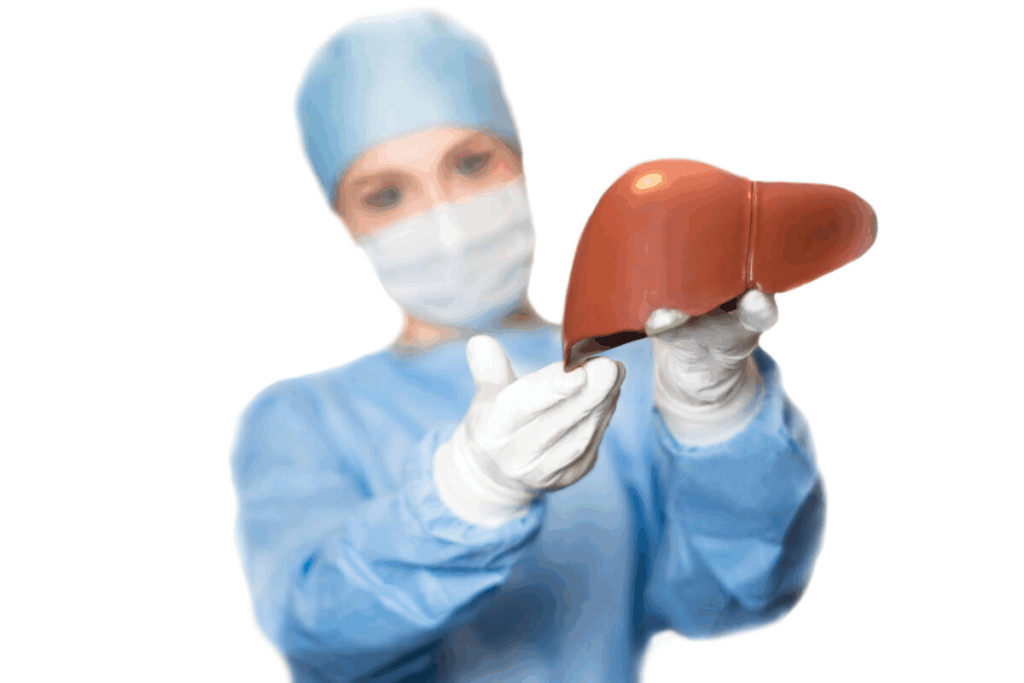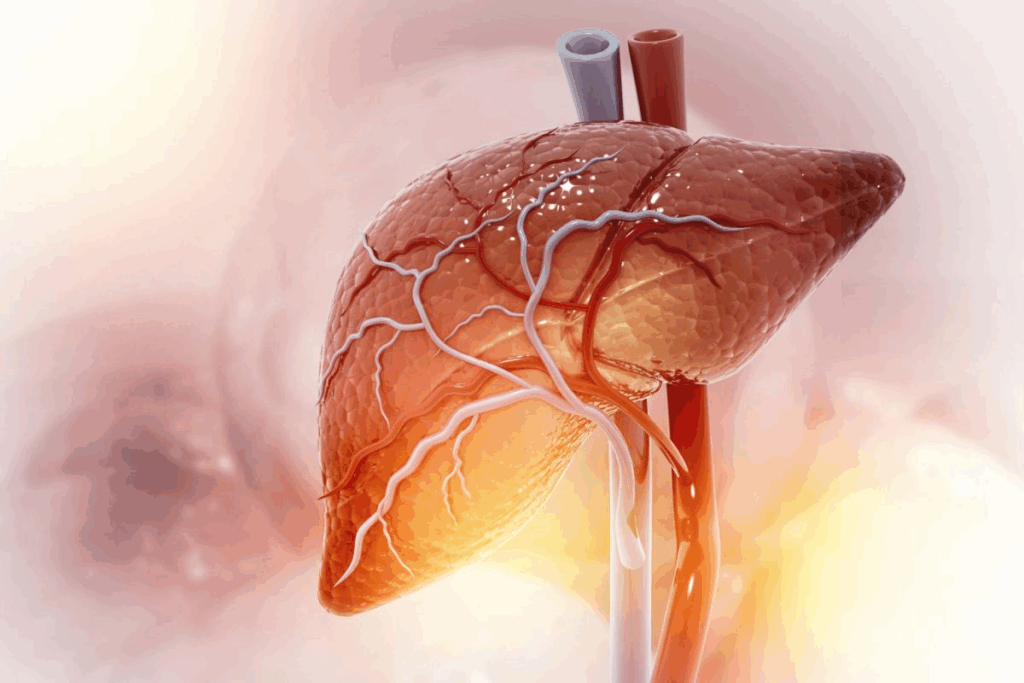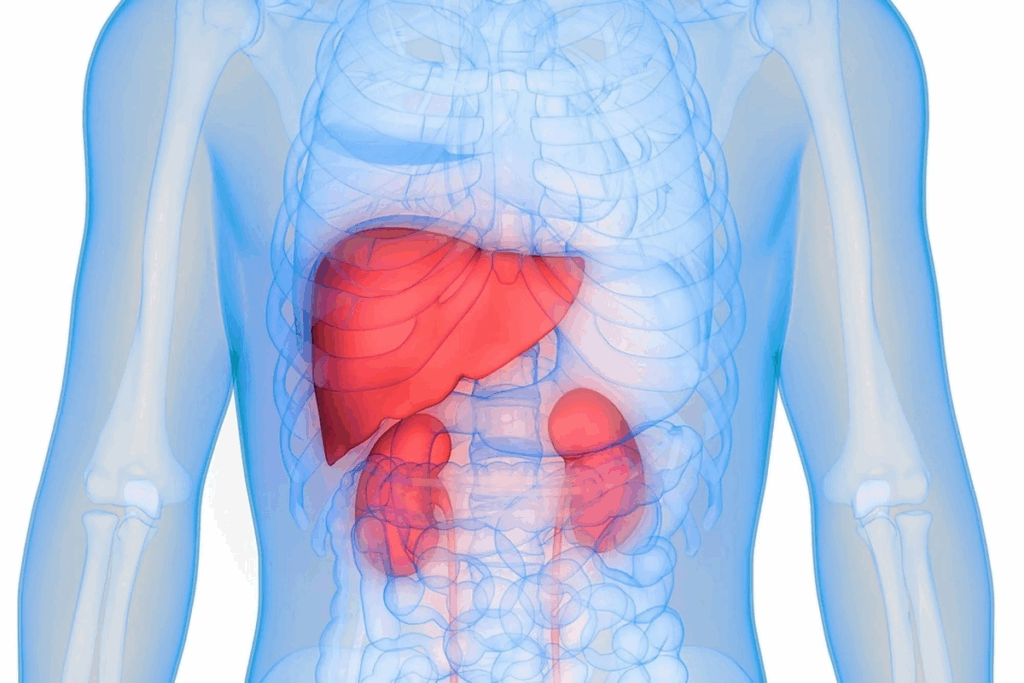Last Updated on October 23, 2025 by mcelik

Managing hepatic drainage well is key for those with bile flow issues. At Liv Hospital, we focus on keeping liver health top-notch. We use the latest medical methods and care with kindness.
Trust and skill are vital in handling liver drainage. Our team is committed to top-notch healthcare. We offer full support and advice for international patients. Our bile catheter methods ensure effective treatment and comfort for all.

The liver is key in digestion, making and moving bile. Bile helps break down fats and vitamins. Knowing how bile is made and moves is important for liver health.
Bile is made in the liver, with about a liter produced daily. It flows into the bile ducts and is stored in the gallbladder. When food reaches the duodenum, the gallbladder releases bile into the small intestine for fat digestion.
Things like gallstones, tumors, and strictures can block bile flow. Inflammatory diseases like primary sclerosing cholangitis can also narrow bile ducts. This can damage the liver and may require bile catheters or internal-external biliary drainage to fix.
Keeping bile flowing right is vital for the liver. If it doesn’t, bile drainage bags and bile duct drainage bags collect it outside the body. Watching the biliary drainage color and amount helps doctors see how well the treatment is working.

Effective liver drainage is key to good hepatic health. The liver is vital for digestion, metabolism, and detox. Its health depends on how well it drains. We’ll look at how good drainage keeps the liver working right and what happens if it doesn’t.
Good liver drainage lets bile flow well from the liver to the intestine. This helps with digestion and keeps toxins away. When the liver drains right, it can clear waste efficiently, keeping us healthy.
We highlight the role of biliary drainage in avoiding problems like jaundice and liver damage.
Not enough biliary drainage can cause big health problems. Cholestasis, where bile flow is blocked, is one. This can harm the liver and even lead to cirrhosis if not treated.
We say that using bile duct catheters early can help fix drainage issues and avoid lasting damage.
Internal-external biliary drain placement is a method that lowers biliary infection risk. It helps restore liver drainage. Knowing how important liver drainage is, patients can take steps to manage their health and live better.
There are many types of bile catheters and drainage devices. Each one is made for different needs in liver drainage. The right device depends on the patient’s health, the bile flow issue, and the doctor’s advice.
Internal-external bile drainage catheters help bile flow from the liver to the intestine or to a bag outside the body. They go through the skin and liver into the bile ducts. This lets them drain bile both inside and outside the body. They’re great for patients with complex bile blockages.
Percutaneous transhepatic biliary drainage (PTBD) uses a catheter to drain bile from the bile ducts. It goes through the skin and liver. PTBD is best for patients with cancer blockages in the bile ducts.
Endoscopic methods use scopes to reach the bile ducts through the mouth. They don’t need to puncture the skin. Stents are often placed this way to open up the bile flow. It’s a less invasive method for some blockages.
We help you choose the right treatment for your condition. Our team works with you to find the best bile catheter or device. We consider your specific needs and medical history.
External bile collection systems are key in managing bile duct issues. They help collect bile outside the body. This aids in diagnosing and treating liver and bile duct problems.
Bile drainage bags are vital in these systems. When picking a bag, consider the patient’s needs and the bile volume. Also, think about the bag’s comfort and how easy it is to use. It’s important to empty and clean the bag regularly to avoid infections and ensure it works properly
Patients need to know how to handle their bags well. This includes attaching the bag correctly, watching for leaks or blockages, and keeping it clean. This helps prevent problems.
Bile duct bags and liver drainage bags collect bile, but for different reasons. Bile duct bags are for patients with bile duct blockages or injuries. Liver drainage bags are for direct liver drainage needs.
The right bag choice depends on the patient’s condition and the bile duct’s location. Knowing the difference between these bags is key to managing liver drainage effectively.
We suggest patients talk to their healthcare providers about the best bag for them. This ensures they get the best care for their condition.
Placing liver drainage catheters is a detailed process that needs skill and precision. We’ll explain the different ways to place catheters. We’ll talk about what makes each method good and what to consider.
The percutaneous method involves putting the catheter through the skin into the liver. It’s used when external drainage is needed or endoscopic methods can’t be used. We use top-notch imaging to place the catheter accurately and safely.
Endoscopic placement uses a flexible tube with a camera to guide the catheter into the bile duct. It’s less invasive than the percutaneous method and is used for internal drainage. Our gastroenterologists and radiologists work together to choose the best method for each patient.
After the catheter is in place, it’s important to watch it closely. We teach our patients how to take care of their catheters. This helps them spot problems like infections or blockages early on.
Using internal-external biliary drains lowers the risk of biliary infections. It also helps restore liver drainage. Knowing about liver drainage catheter placement helps patients make informed choices. It ensures they get the best care possible.
Watching the color and amount of biliary drainage is key to spotting problems early. We keep a close eye on the drainage’s look to act fast and care for our patients well.
Normal bile is golden yellow to green and smooth. How much comes out can change based on the patient and the drainage system. We look for no big chunks or blood in it, usually.
Any big change in drainage color or feel is a red flag. Cloudy bile might mean infection, and bloody bile could mean bleeding in the bile ducts. We watch for these signs to fix problems quickly.
After a gallbladder removal, watching the bile drainage is even more important. Without a gallbladder, bile flow and makeup can change. We check the drainage’s color and amount closely for any signs of trouble.
By keeping a close eye on biliary drainage, we catch problems early and treat them right away. This way, we can manage our patients’ health better and get the best results.
Managing biliary catheters well is key for patients with liver drainage procedures. It’s important to care for and maintain them to avoid problems and keep them working right.
Flushing biliary catheters regularly is important to keep them open and prevent clogs. We suggest using sterile saline solution and following a flushing schedule set by your doctor. The flushing schedule can change based on the catheter type and your needs.
Flushing Schedule Guidelines:
| Catheter Type | Flushing Frequency | Solution Used |
| Internal-External Biliary Drainage Catheter | Daily or as directed | Sterile Saline Solution |
| Percutaneous Transhepatic Biliary Drainage Catheter | Every 8 hours or as directed | Sterile Saline Solution |
Keeping biliary catheters in place is very important to avoid serious issues. We suggest using a securement device as advised by your doctor. Always check the catheter and dressing for any signs of movement or irritation.
Tips for Securing Catheters:
It’s vital to take good care of the insertion site to prevent infections. We recommend daily checks for redness, swelling, or discharge. Clean the site with a sterile solution as your doctor advises and change the dressing.
By following these guidelines for flushing, securing, and caring for the insertion site, patients can greatly lower the risk of complications with biliary catheters. Regular upkeep and monitoring are essential for successful management.
Fixing liver drainage problems needs a detailed plan for the best results. Issues with liver drainage can really hurt a patient’s health and recovery. We’ll talk about the usual problems and how to fix them.
Catheter blockages often stop bile flow. To fix this, we suggest:
If blockages happen, we might need to do more to clear them. It’s key to follow the right flushing methods and times to avoid problems.
Leakage at the insertion site can cause skin problems and infections. To handle this, we:
It’s very important to take good care of the insertion site. Keeping the area clean and dry is essential to avoid issues.
Biliary infections are serious and need quick action. Signs include:
We stress the need to watch for these signs and get medical help if they show up. Checking the bile after surgery can help spot problems early.
It’s important for patients to know when to get help right away. We tell patients to seek help if they have:
Acting fast can stop serious problems and help patients get better.
Effective liver drainage is key to keeping the liver healthy. Bile catheters are important for this. Knowing about different types of catheters helps patients make better choices for their care.
Managing bile catheters right is critical for good health in patients with liver issues. We talked about how to keep these devices clean and working well. This includes flushing, securing, and caring for the insertion site.
By following the advice in this article, patients can better manage their condition. Our team is dedicated to giving patients the care they need. We aim to help them get the best treatment and achieve the best results with bile catheter management and liver drainage.
A bile catheter helps drain bile from the liver or bile ducts. This is important when there’s a blockage. It keeps the liver working right and prevents problems.
To manage your bile drainage bag, make sure it’s secure to avoid leaks. Empty it regularly and watch the bile for color or consistency changes. Our team can help with using and caring for these bags.
There are many bile catheters, like internal-external and percutaneous transhepatic ones. Each has its own use and benefits. Our experts can help pick the best one for you.
A biliary catheter can be placed through the skin or endoscopically. The goal is to keep bile flowing from the liver and gallbladder into the intestine or a collection device.
Normal bile is golden yellow to green. If it’s cloudy or bloody, it could mean a problem. You should get medical help right away.
Flushing your catheter depends on your condition and the type of catheter. Our team will give you a personalized schedule to keep it working well.
Signs of infection include fever, chills, and abdominal pain. Also, watch for changes in bile color or consistency. If you see these signs, get medical help fast.
To avoid dislodgement, make sure the catheter is securely attached. Follow our care and maintenance tips. Regular checks and adjustments can help keep it in place.
If you see leakage, contact our team right away. We can help manage it and prevent more issues.
It’s best to avoid getting the catheter site wet until it heals. Our team can give you advice on bathing safely with a catheter to lower infection risk.
Subscribe to our e-newsletter to stay informed about the latest innovations in the world of health and exclusive offers!
WhatsApp us